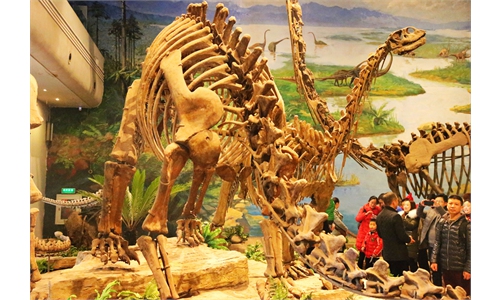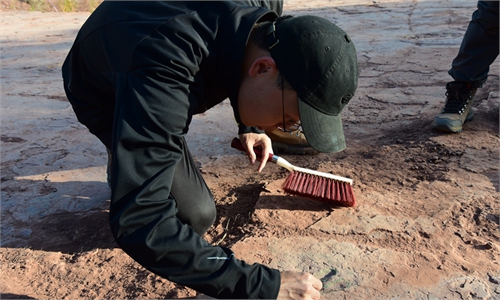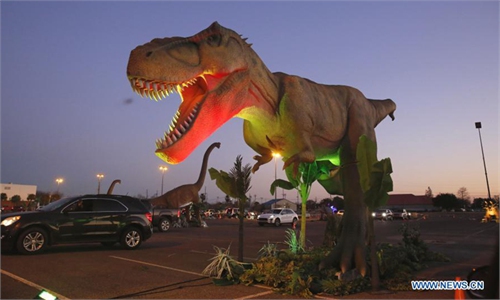Largest site of dinosaur footprints confirmed in SW China, facing challenge of copper mining
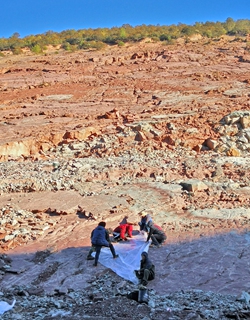
Paleontologists find footprints of hadrosaur at the Zhaojue dinosaur footprint cluster. Photo: Courtesy of Xing Lida
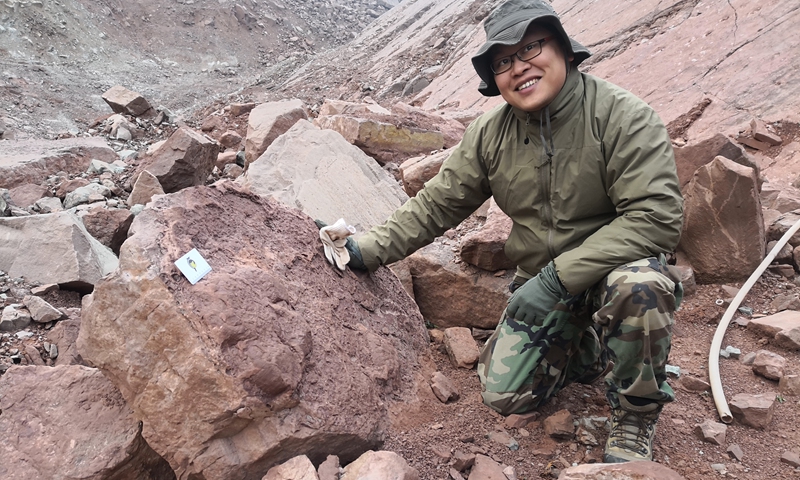
Paleontologists find footprints of hadrosaur at the Zhaojue dinosaur footprint cluster. Photo: Courtesy of Xing Lida
Chinese and overseas paleontologists announced on Thursday that, a section of the Zhaojue dinosaur footprint track site, in Southwest China's Sichuan Province, is the largest in the country, covering more than 9,000 square meters.The footprint track site was discovered in a local copper mine in four areas where dinosaur footprints were identified. Zone 1 was discovered in the 1990s and Zone 2, the largest in China, was discovered after 2013. Zone 2 also preserved traces of dinosaurs swimming activity.
1,928 footprints have been found in the entire site, including previously reported pterosaur footprints and traces of theropod activity in the water.
Due to the lack of Cretaceous dinosaur bone fossils in the southern Sichuan Basin, the rich footprint records have become an excellent general survey sample for studying the paleoecology of the Cretaceous dinosaur fauna in the area, according to a statement by Xing Lida, associate professor from China University of Geosciences in Beijing, shared with the Global Times.
The dinosaur footprint cluster in Zhaojue is both an opportunity and a challenge for researchers and scholars. Continued mining operations have destroyed part of the site, but at the same time, new footprints have been exposed in the process.
Xing believes paleontologists should be on the site to continuously monitor the mining conditions and collect as much footprint data as possible before the surface is completely uncovered. At the same time, it is also recommended that relevant authorities negotiate with the mine owner as soon as possible to stop mining and protect the existing footprints.
The discovery was made by a team that included Xing and, Wang Miaoyan, PhD student from the China University of Geosciences in Beijing. Martin Lockley, from the University of Colorado, German paleontologist, Hendrik Klein, and research fellows Peng Guangzhao and Ye Yong, from Zigong Dinosaur Museum, are also in the team.
